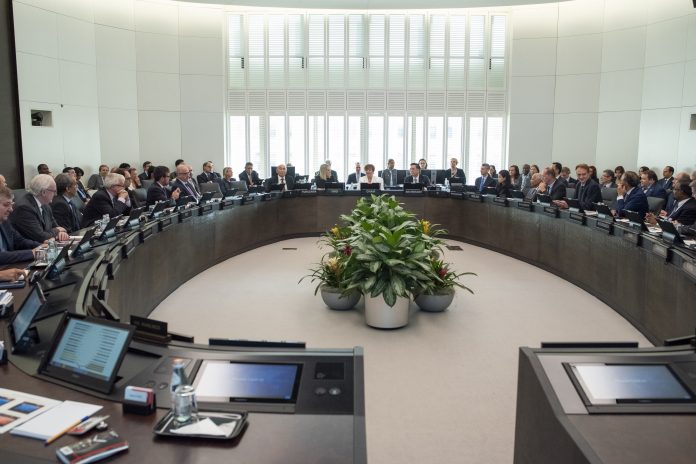By Amin Kef Sesay
We all know that to continue to spend more than one earns results into mounting debt. The same is true for Governments and business entities. In which light, in 2019 Sierra Leone’s public debt was 2,951 million dollars. It increased by 130 million since 2018.
This amount means that the debt in 2019 reached 71.66% of Sierra Leone GDP, a 2.57 percentage point rise from 2018, when it was 69.09% of GDP.
According to the last data point published, Sierra Leone per capita debt in 2019 was 378 dollars per inhabitant. In 2018 it was 369 dollars, afterwards rising by 9 dollars. In 2009, the debt per person was 188 dollars (Source World Bank).
The Bank discovered that the macroeconomic situation remained challenging during the first half of 2019 (2019H1) as inflationary pressure and exchange rate depreciation increased. Inflation, which moderated from 18.2 to 16.8% in 2018, increased to 17.2% in 2019H1 reflecting a sharp depreciation of exchange rate and elevated non-food prices due mainly to the increase in fuel prices.
The Leone came under intense pressure in 2019H1, depreciating by 4.8% and 6.5% (YoY) at the official and parallel markets, respectively, reflecting lower-than-expected export receipts and donor inflows as well as increased demand for foreign exchange to finance imports.
Total public debt was estimated to increase from 60.9% of GDP in 2018 to 62.3% of GDP in 2019, reflecting depreciation of the exchange rate as well as increased domestic debt on account of the conversion of stock of arrears into debt.
The Bank analysed that the country remained at a “high risk” of debt distress for both external public debt and overall public debt.
This week, when IMF approved disbursement of US$ 44.2 million (SDR 31.11 million) to Sierra Leone to support the Government’s policy and reform efforts aimed at reinforcing the country’s recovery from the pandemic, preserving macroeconomic stability, and sustaining inclusive long-term growth, it warned that, “Looking ahead, continued strong policy efforts are needed to help the recovery while safeguarding macroeconomic stability. With a high risk of debt distress, this requires enhanced revenue mobilization, prudent expenditure management and continued external grant support.”
IMF notes that even though there are early signs of economic recovery, Sierra Leone continues to face COVID risks, and a tight financing situation amidst substantial development and priority expenditure needs.
With fiscal space remaining limited, reflecting still low revenue base, an elevated public debt level, and substantial COVID-19-related and other priority expenditure and development needs, IMF said that the Government’s reform agenda, supported by the ECF, should continue to aim at creating fiscal space for development by strengthening revenue mobilization, containing current spending and improving the efficiency of public investment.
Even though IMF foresees growth would recover to pre-COVID-19 levels in the medium term, it says there are considerable risks to outlook.
Over the medium term, non-mining growth is projected to average around 4.5 percent. The external position would remain vulnerable as international reserve coverage is expected to decline.
Risks to the outlook are significant and include, for instance, unexpected global shifts in the COVID-19 pandemic or an intensification of the third wave, uncertainties in the mining sector, lower-than-expected support from development partners or slower-than-expected reform implementation.






